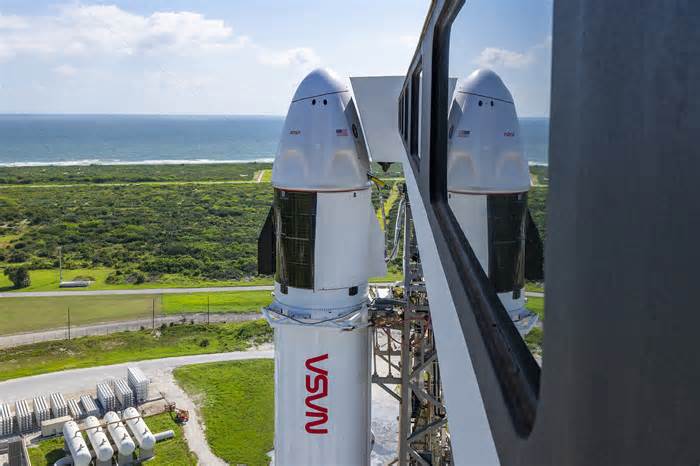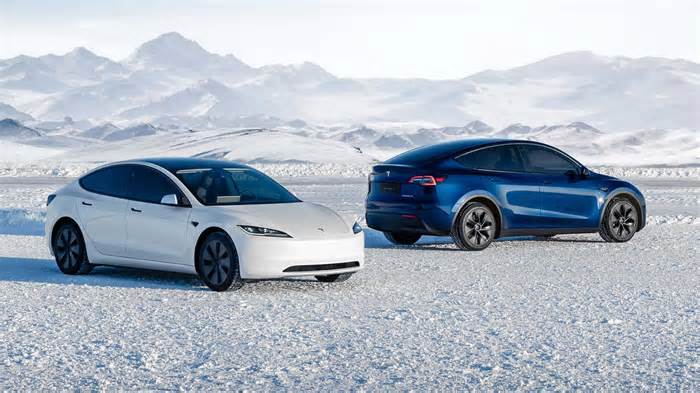
SpaceX, NASA launches Crew-9 with two people
- by NASASpaceFlight.com
- Sep 28, 2024
- 0 Comments
- 0 Likes Flag 0 Of 5

Click here to Join L2
That original mission, which was to last approximately eight days, was continuously extended. During that time, the Crew-9 mission, which was scheduled to launch Aug. 18, was delayed.
On Aug. 24, NASA announced that the agency had voted unanimously to return Starliner uncrewed and to instead have the astronauts join Expedition 71 and 72. With the decision to leave the crew up longer, they also chose to return the astronauts as part of Crew-9, necessitating the crew change.
Gorbunov remained a member of the flight crew due to a ride-share agreement between NASA and Roscosmos, wherein a cosmonaut will fly on a U.S. vehicle in exchange for a NASA astronaut flying on Soyuz.
Cardman and Wilson will reenter the pool of astronauts that can be chosen for future flights, NASA officials said. Cardman would have been making her first trip into space while Wilson was set for her fourth trip into orbit.
“Handing the helm to [Hague] is both heartbreaking and an honor,” Cardman said in a post on Instagram. “Nick and Alex are truly an excellent team, and they will be ready to step up. I only wish Stephanie, Nick, Alex, and I could fly together, but we choose without hesitation to be part of something much larger than ourselves.”
Crew members
Col. Tyler Nichlaus Hague, or Nick for short, earned a Bachelor of Science in astronautical engineering from the United States Air Force Academy in 1998, and a Master of Science in aeronautical and astronautical engineering from MIT in 2000.
NASA astronaut Nick Hague arriving at the Launch and Landing Facility prior to the Crew-9 launch. (Credit: Max Evans for NSF)
Selected as an astronaut in 2013, Hague’s first flight was Soyuz MS-10 in 2018. During that flight, a booster failure resulted in the mission aborting mid-flight and the crew escape system successfully activating. Hague and his Russian colleague, Alexey Ovchinin, were unharmed.
Hague later flew successfully aboard Soyuz MS-12 in 2019, spending 203 days aboard the ISS as part of the Expedition 51 and 52 crews.
Ovchinin is currently on the ISS, arriving aboard Soyuz MS-26, and will once again spend time in orbit with Hague.
Following his successful mission, Hague became the United States Space Force’s new military service’s Director of Test and Evaluation at The Pentagon. Hague held that position from 2020-2022 before returning to NASA to assist with the Boeing Starliner program before his selection for this flight.
Born in Kansas, Hague is married with two children. A baseball player growing up, Hague is also a big Doctor Who fan.
Born in Zheleznogorsk, Kursk region, Russia, Alexander Gorbunov studied engineering with qualifications in spacecraft and upper stages from the Moscow Aviation Institute, graduating with honors.
Cosmonaut Alexander Gorbunov arriving at the Launch and Landing Facility prior to the Crew-9 launch. (Credit: Max Evans for NSF)
In 2012, he worked for RSC Energia, a major rocket manufacturer, in multiple departments including assisting in cargo launches to the ISS from the Baikonur Cosmodrome in Kazakhstan.
In an interview with NSF, Gorbunov said through a translator that he has received training both from Roscosmos as well as NASA and SpaceX but says they’re more similar than you would think.
“So here it would probably be better to compare my training as the Flight Engineer 2 on Soyuz, and the mission specialist position training for Crew Dragon, and if we compare those two, then the time that we spend training and the knowledge that we receive training is… more or less the same,” Gorbunov said. “So, the main thing that the mission specialist, as well as the Flight Engineer 2, are responsible for is to make sure that they are safe during their nominal mission or during any emergency as well as helping the commander and pilot in different situations upon request and if necessary.”
Vehicles
The crew will fly inside Crew Dragon C212, nicknamed Freedom. The vessel will be making its fourth trip to the ISS. It first flew the Crew-4 mission in April 2022. It was then used in May 2023 and again in Jan. 2024 for the Axiom-2 and 3 missions respectively. Axiom Space is a private company that purchased the use of the Crew Dragon capsule for private crew missions to the orbiting laboratory.
The booster, B1085, will be launching on its second flight, and its second mission originating from SLC-40. It previously launched 22 Starlink v2 mini satellites into orbit on the Starlink 10-6 mission from Florida.
The booster is scheduled to land just a few miles away at Landing Zone 1 (LZ-1), also located on CCSFS property.
Teams performed a static fire test of the vehicle on Sept. 24, where all nine Merlin 1D engines on the first stage were ignited while the rocket remained on the ground. Following the test, it was lowered and returned to the Horizontal Integration Facility (HIF) to ride out the hurricane.
SLC-40
This mission is the first crew flight ever to take place from SLC-40. Before its use by SpaceX, the complex launched different variants of the Titan launch vehicle from 1965 until April 2005.
It did see one crew capsule launch in that time, although nobody was onboard. In November 1966, a Gemini capsule was launched without crew on the MOL-B mission for the Air Force as a test flight for the Air Force’s Manned Orbiting Laboratory program.
SpaceX would start converting the pad for Falcon 9 launches in 2008. It is now the busiest active launch pad in the world.
The recently installed crew access arm is used to load cargo ahead of the CRS-30 mission. (Credit: SpaceX)
In early 2023, SpaceX began assembling a crew access tower at the launch pad, with a design similar to the Fixed Service Structure at LC-39A, where all SpaceX crew missions had launched from. The crew access arm was used to load in supplies and late-load experiments for an ISS resupply mission in 2024, marking its first official use.
The new crew escape system on the tower is different from the slide wire baskets present at SpaceX’s other pad. In Feb. 2024, SpaceX first tested a new deployable slide system meant to help astronauts and pad crew escape in the event of an emergency.
Launch day
The crew were transported from the Operations and Checkout Facility at NASA’s Kennedy Space Center, before driving toward SLC-40. Once there, the crew ascended the elevator before making their way inside the capsule a few hours before liftoff.
Fueling occured at T-35 minutes with the crew already onboard. The launch escape system was armed before this event.
B1077 launches the Crew-5 mission, carrying four astronauts to the ISS. (Credit: Sawyer Rosenstein for NSF)
Following a standard fueling procedure, the crew lifted off on a northeasterly trajectory. The ISS is in a roughly 400 km circular orbit inclined 51.64 degrees. The whole flight took roughly 12 minutes, after which Crew Dragon will separated from the second stage and proceeded on its day-long trip to the station.
Docking to the forward-facing port of the station’s Harmony module is expected at 5:30 PM EDT (21:30 UTC) on Sept. 29. The crew of two, along with Williams and Wilmore, will return no earlier than February 2025.
(Lead image: Crew Dragon Freedom before the launch of the Crew-9 mission. Credit: SpaceX)
Please first to comment
Related Post
Stay Connected
Tweets by elonmuskTo get the latest tweets please make sure you are logged in on X on this browser.
Sponsored
Popular Post
Tesla: Buy This Dip, Energy Growth And Margin Recovery Are Vastly Underappreciated
28 ViewsJul 29 ,2024






 Energy
Energy



















